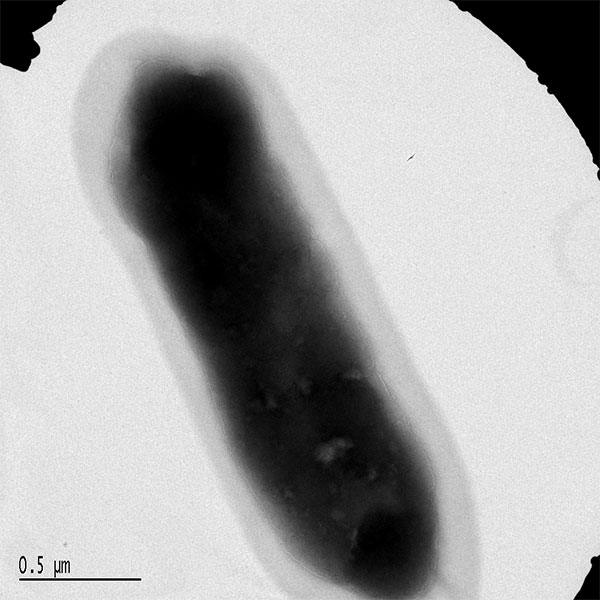
At LanzaTech, we’ve partnered with some of the smallest living beings on Earth to build a climate solution with gigaton-scale potential. Those living things are called microbes, and they’re helping us abate hundreds of thousands of tonnes of planet-warming carbon emissions each year.
Read on for more how we’re using these critical organisms to bring our vision of a circular carbon economy to life.
So, what exactly are microbes?
Microbes, also called microorganisms, are tiny living things that exist all around us. Today’s microbes descend from the world’s very first life forms and can thrive in soil, water, air, the human body and just about every other surface.
They may be small, but they have an outsized impact on our lives. There are approximately 1 trillion species of microbes on Earth, including various kinds of bacteria, fungi and viruses. While some microbes can make us sick, others leave us alone entirely, and there are many good and useful microorganisms that exist naturally in our bodies and in the environment.
How scientists partner with microbes
For decades, researchers have found ways to use bacteria to benefit humanity. Examples include probiotic supplements for gut health, antibiotic medications like Penicillin that fight infection, and fermented foods like bread, kimchi and kombucha.
More recently, biologists have discovered the ability to engineer certain microbes to complete specific tasks. For example, if a particular microbe naturally produces a certain chemical or compound, scientists can apply selective evolutionary pressures to them (a.k.a. “survival of the fittest”) to increase the rate of production.
Other scientists have turned to synthetic biology, also called synbio,to reprogram microbes’ DNA to direct them to make or do different things. For example, they can genetically engineer an organism that is normally used in bread baking to instead produce a patchouli fragrance for perfume. These scientific breakthroughs have created all kinds of new possibilities for humanity, ranging from essential vaccines and food ingredients to novel textiles and personal care active ingredients.
How LanzaTech uses microbes to fight climate change
In Earth’s earliest days, the planet was a hostile environment, but ancient microbes evolved to thrive in it, with some helping shape the atmosphere to be hospitable for humans and other forms of life. These microbes lived in the ocean and survived by feeding on the gas emitted from deep sea vents. In 2005, our founders Dr. Sean Simpson and Dr. Richard Forster began investigating the successor of a particular ancient microbe that consumes carbon-rich gases and innately produces ethanol, a crucial chemical ingredient in many of our global supply chains.
Our hero Clostridium autoethanogenum (C. auto) evolved from what are believed to be Earth’s earliest life forms and can only survive in an anaerobic environment. Ethanol production from carbon oxide gases was inherent to its metabolism, and the founding team subjected the strain to numerous successive rounds of directed evolution to improve its efficiency in producing ethanol from syngas, a mixture of CO, CO2 and H2. Today’s breakthrough synthetic biology tools had not yet been developed when the team began working with C. auto, so our first commercial strain took time and patience and trial and error to develop.
Since then, we have moved from the research and development phase to build a commercial business around this proprietary microbe, and others like it. We house and grow our microbes in bioreactors, which are pieces of hardware that can be attached to industrial emissions sources like steel mills or landfill sites. Once installed, our bioreactors capture the carbon-rich gases produced as a byproduct of these industrial processes, preventing them from being released into the atmosphere. Inside the bioreactor, our microbes consume the carbon gases and convert them into ethanol molecules through a biological process called fermentation. This transformation process increases the value of the material rather than having it lost as emissions.
LanzaTech and our industrial partners then sell the ethanol produced in our bioreactors to companies that need it to make things we all use, like aviation fuel, building materials and consumer goods. As a result, our microbes allow us to create value from waste.
By offering a solution both for carbon generators and carbon users, we’re tackling humanity’s gigaton-scale carbon waste problem from both ends. Instead of simply capturing and storing excess carbon, we are recycling it with biology, bridging disconnected material flows and paving the way for a truly circular carbon economy.
What’s next for LanzaTech’s microbes
In addition to our original ethanol-producing microbes, our R&D team has been hard at work developing new microbial strains that can convert carbon gases into other critical molecules for the global supply chain. For example, we’re also exploring using our process to make acetone, isopropanol and monoethylene glycol. In 2023, we made significant progress on commercializing our isopropanol production strain with partner Suncor as well as our monoethylene glycol production strain.
If you’re interested in learning more about LanzaTech’s carbon biorecycling technology, reach out to us here.